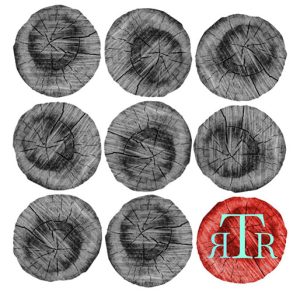Big Fiction – Spring/Summer 2012
Number 2
Spring/Summer 2012
Biannual
Julie J. Nichols
What a find Big Fiction is! The magazine publishes only three to five “shorts” or novellas of 7,000 words or more, bound in a beautiful hand-designed letterpress volume of just the right size: perfect for a weekend away, an afternoon of rich leisure, an evening curled up by the fire. This issue is a delight to hold, to view, to read carefully. The editors’ intention of visual and tactile beauty aligned with literary delectability is fully realized. The green, tastefully mismatched typography of the title takes up a small top left corner of the white cover, which is filled with a red etched fiddlehead fern. “No. 2” takes up minimal space in the bottom right corner, and in the title corner the image of a young fiddler playing unobstrusively.
What a find Big Fiction is! The magazine publishes only three to five “shorts” or novellas of 7,000 words or more, bound in a beautiful hand-designed letterpress volume of just the right size: perfect for a weekend away, an afternoon of rich leisure, an evening curled up by the fire. This issue is a delight to hold, to view, to read carefully. The editors’ intention of visual and tactile beauty aligned with literary delectability is fully realized. The green, tastefully mismatched typography of the title takes up a small top left corner of the white cover, which is filled with a red etched fiddlehead fern. “No. 2” takes up minimal space in the bottom right corner, and in the title corner the image of a young fiddler playing unobstrusively.
For the fiction, length is what matters: somewhere between a conventional “short” (which has a market in so many lit mags) and a novella (which requires a different kind of publisher), this “big fiction” allows a story to unfold, in any number of ways, beyond the range of the usual. The editors invite traditional or experimental genres. The bottom line is “substance, texture, urgency”—fiction that’s “generous, transportive, and a little wild.” There are three stories in this issue, each one a gem. All three of these authors are experienced, award-winning writers. The editors at Big Fiction have excellent taste.
Stephanie Carpenter’s “Mr. Codman’s Women,” written in the present tense and without quotation marks, was inspired by an 1888 legal case in which a real Mr. Codman left all his money to his mistresses, excluding his wife and daughter altogether. Incensed, the female relatives contested the will on grounds of insanity. In Carpenter’s retelling, Mr. Codman is, yes, a little insane, but so are the women; his mistresses lead him on, wildly, and his daughter (my favorite of these females) forces him to release her inheritance early on grounds that he’s ruined the family name by his philandering. She takes the check and runs, and he finds that he misses her grandly, longingly. Carpenter has us following Mr. Codman’s and his wife’s return to reality with sympathy; readers will take great pleasure in the late-nineteenth-century setting, the pistols, the greatcoats, the dastardly actors and lascivious mistresses. I can’t give away the end, but it’s generous indeed, and full of substance.
Equally excellent is poet Jordan Smith’s “A Morning.” This is the most “traditional” of the three pieces in this issue (called, collectively, novellas, in the magazine’s website description of the issue), but its language resonates beautifully from its first paragraphs, which are long, richly textured, and immediately transportive. The artist Kirk looks back on his life with some regrets as he looks forward to a visit from an old “friend” with some reticence. The relationships between him and this “friend” and him and his wife, and the art they each produce and pretend to appreciate, constitute the weight of this intensely satisfying story. Not a sentence, not a word, is out of place.
The centerpiece of the issue is the longest, “Long Story, No Map” by Jerry Gabriel. It begins on “the day before Choi fell from the roof,” but then it circles back on itself to tell the story of Carl, an unemployed wanderer whose aimless drifting lands him in a college apartment complex where he’s recruited by Mr. Choi to help him re-roof the building. There’s a postmodern feel to this story, a somewhat regretful anti-salute to Millennials and lost young adults, but ultimately there is an urgent greatness in Carl and in Choi that made me want to reread the story immediately.
Well, that was true of all three stories, actually. One member of the editorial board of BF is a master printer who “prints what matters on a 104-year-old Chandler & Price and a Vandercook proof press from the late 1960s.” The others are writers and “puzzlers,” equally committed to “what matters”: truly admirable fiction, beautiful presentation, lasting quality. For lovers of any of these, Big Fiction is an indispensable gift.
[www.bigfictionmagazine.com]




